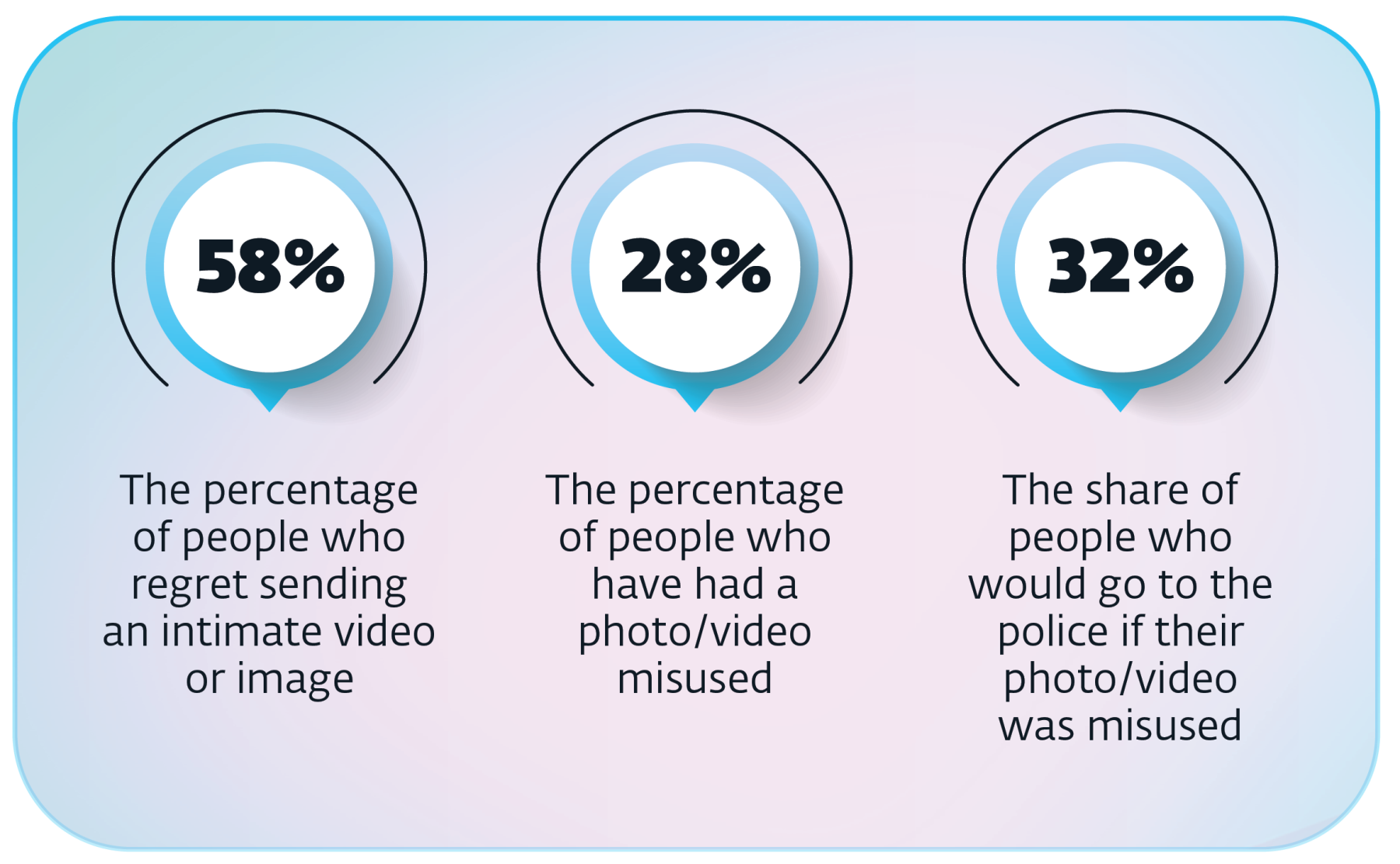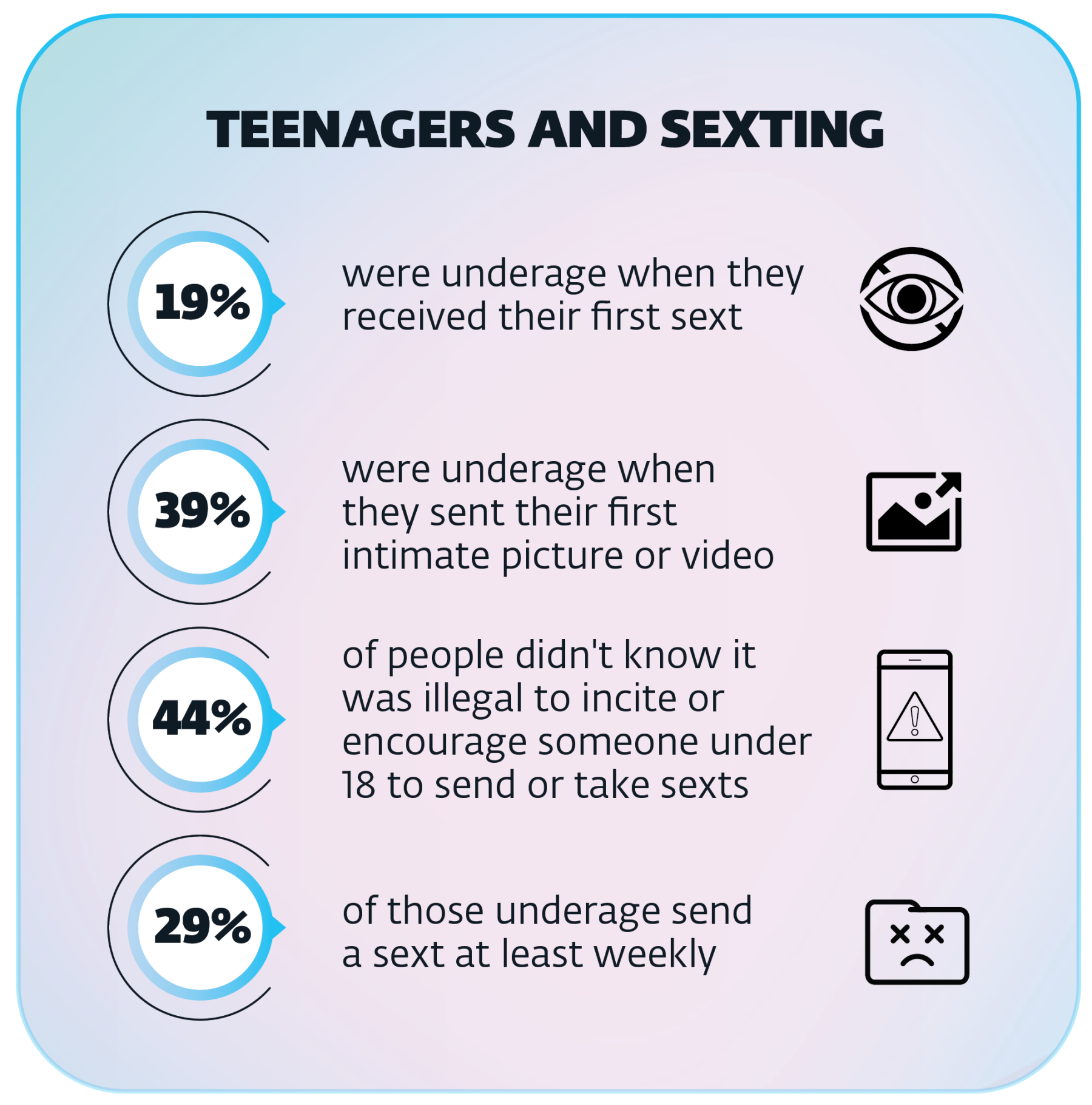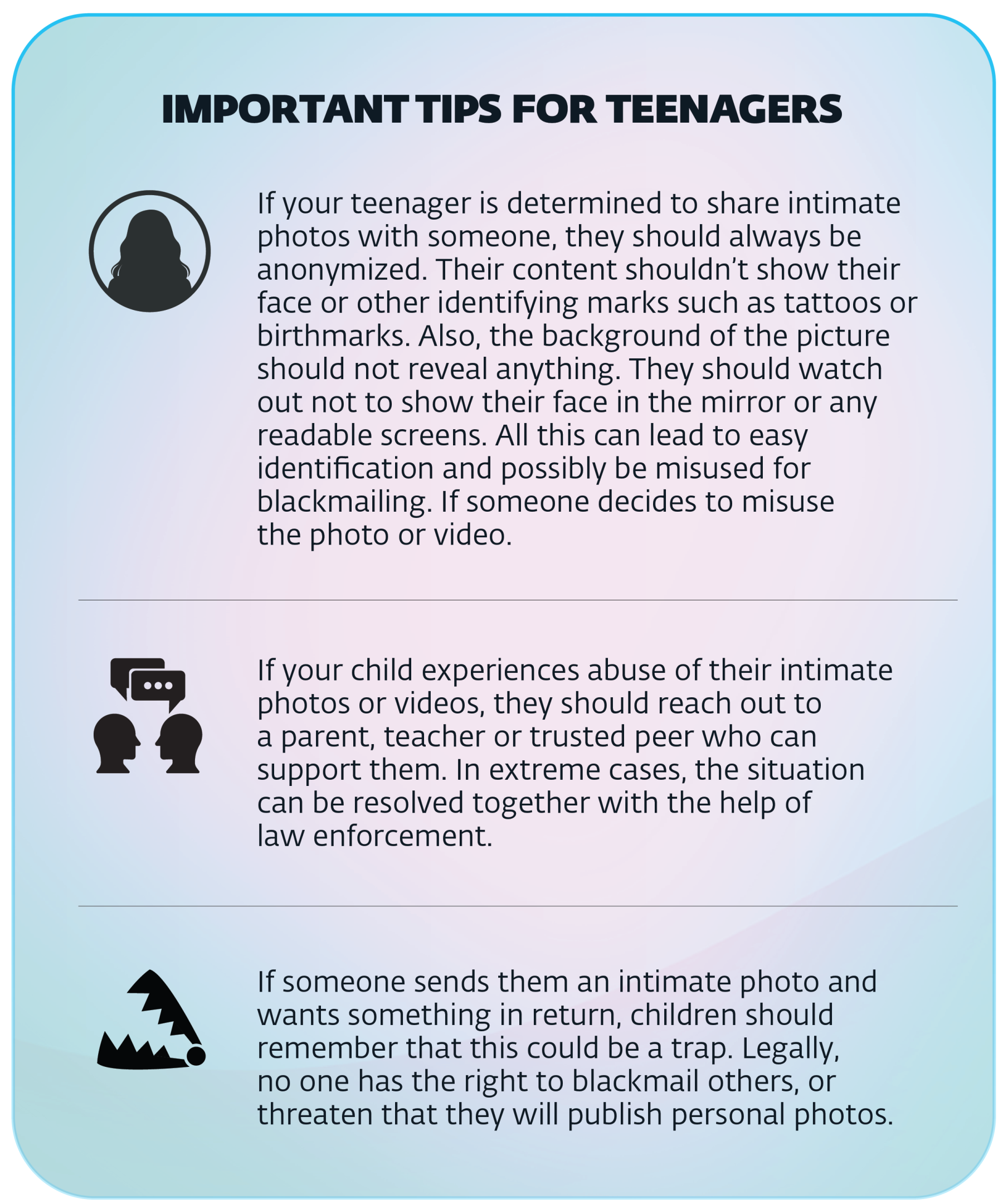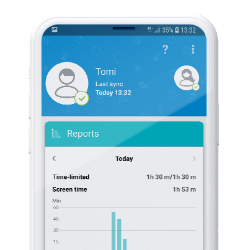How are my kids interacting with social media daily?
Trends are great until we fall for them.
Whether through social media apps or games, children are on their devices more than ever before. Recent figures show children in the UK are spending between 7.5 - and 9 hours a day looking at a screen.
Whilst much of what they are doing is entirely innocent, there is a growing trend for children to send intimate images and messages to their peers, or even strangers online.
Sexting is the sharing and receiving of sexually explicit messages ‘nudes’, videos or photos in the digital space. It can start as a joke or as innocent fun with friends while discovering one's sexuality, or as part of a romantic relationship. However, like any other online activity that involves sensitive data, sending intimate content carries potential risks.

According to the recent ‘Think Twice’ study by ESET, 39% of participants were underage (under 18) when they sent their first intimate photo or video. Consensual sexting is most common in partnered relationships, but it is not unusual among complete strangers, especially teenagers.
Nothing that is shared, even only once, can ever be fully deleted. It can be used by anyone with access to it for bullying or blackmail. The abuse of sexual content that had been sent consensually occurs mostly among disappointed partners after a breakup.
ESET’s survey shows that the most common social media for sending intimate content among teenagers are Whatsapp (37%) and Snapchat (30%). Whilst these apps may offer time-restricted viewing, it’s important to remember that images shared can still be screenshotted and saved.

Don’t set up super strict rules for using phones and social media - being overprotective towards your child can lead to an even bigger desire to participate in activities such as sexting. Educate your children about the unwanted consequences of sexting and use specific examples to illustrate the situation.

If children come to you for advice, reassure them that confessing was the best move possible. Do not judge them. On the contrary, provide them with support and acceptance so that they can regain confidence and a good feeling about themselves. Communication is key to a healthy home environment. Reasonable and calm parents are more likely to be trusted by a teenager. A communicative and open environment leads to awareness and limits the thrill of participating in tricky online activities. It’s not okay for anyone to pressure anyone into sending an intimate image or video, so teach your child to be brave and report it.
The main rule for which you should seek agreement with your children is the use of personal information online. Are your kids confused about what to share and what not? Paint a vivid picture for them – just don’t post or send anything they wouldn’t want their grandparents to see.
They should always think twice about what they are putting out into the online world, including their seemingly private conversations and chats. This approach limits the risk of having their intimate photos misused.
Kids should never send photos, videos, or intimate messages to anyone they don’t know. Introduce them to secure messaging apps that ensure communication remains between the sender and the recipient. Focus on early education and open discussions, so that when kids start exploring their sexuality offline and on, they know the risks and how to avoid them.
What about non-consensual sexting?
Non-consensual sexting is illegal, and your children should know this. In other words, any type of sexual message where consent isn’t given by both parties is considered sexual harassment. Moreover, not only the sender but also anyone who forwards this type of content can be found guilty.
Sending or receiving a sext when you’re under 18 is against the law.
Make sure your kids know that creating and sharing any sexual content of a person under the age of 18 is illegal. Sexting between minors and adult-to-minor sexting may be classified as a crime of sexual coercion or as the production of child pornography. And you might not realise how common it is. The Internet Watch Foundation (IWF) discovered self-generated child sexual abuse material featuring children under 10 on more than 100,000 web pages in the past year. Whilst we don’t want to scaremonger children, it’s important that they understand the risks of sexting and know how to recognise and respond to inappropriate requests for such content.
If something goes wrong, there’s support to help. Download this Digital Toolkit for parents offering personalised online safety advice that keeps up with your child’s digital needs. Although you may feel embarrassed speaking to your children about sexting, it’s important they feel comfortable speaking to someone about it.
Find out more about ESET’s Think Twice Campaign and how you can support your child to safely navigate communication in the digital space.


With ESET Parental Control for Android
TRY FREE FOR 30 DAYSTrends are great until we fall for them.
In our present digital age, where social media platforms are a hub for connection, it's crucial to understand the implications of oversharing, particularly for our kids.
By sharing more we can prevent oversharing